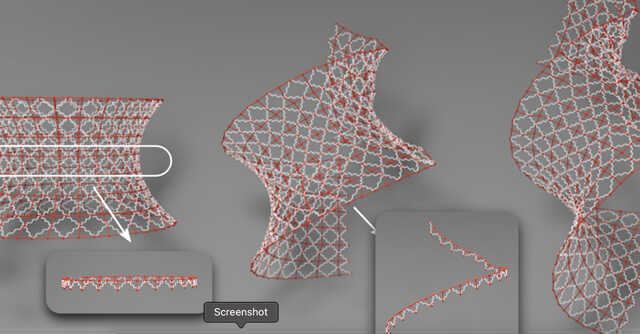
Harvard scientists create shape-shifting material that can take infinite shapes


Researchers at Harvard’s John A. Paulson School of Engineering and Applied Sciences (SEAS) have developed a new shape-shifting material that can morph into “any possible shape”. The research, which was published in the Proceedings of the National Academy of Sciences, could pave the way for new applications in robotics, biotechnology and more.
In a post on the SEAS’ blog, the researchers explained that developing materials that can morph into any shape is about balancing two contradictory challenges — conformability and rigidity. While the former allows materials to transform, too much conformability will make it difficult to maintain new shapes in a stable manner.

On the other hand, rigidity is the property that allows materials to hold new shapes, and too much rigidity will make it impossible for materials to change shapes. The researchers said they designed a “neutrally stable material”, which combines rigid and elastic elements to balance energy in the cells. They likened the material to the Pixar lamp, which pops up at the beginning of every Pixar movie. “The Pixar lamp head is stable in any position because the force of gravity is always counteracted by springs that stretch and compress in a coordinated way, regardless of the lamp configuration,” they said.
In doing so, the material can transition between an “infinite number of positions or orientations”, which will all remain stable. They call the discovery “totimorphic materials” and showed how one single sheet of totimorphic cells — unit cells of of the totimorphic materials — can twist into a helix, curve up, morph into the shape of two distinct faces and even bear weight.
Research into shape shifting materials isn’t particularly new. A September report by the Chemical Abstracts Service, a division of the American Chemical Society, found that research into shape-shifting materials has been growing since the 1980s. It said that 40 percent of the publications came from China, while close to 25 percent came from the US and Japan.

Scientists from the University of Colorado at Boulder had published a paper on the subject back in 2018, while physicists from Case Western Reserve University and Tufts University, in 2019, said they had devised ways for a liquid crystal surface to change its shape without an external stimulus. The Harvard team itself had also written a paper on their research back in 2019.
According to L. Madhavan, senior author of the paper, claimed shape-shifting materials that exist today can “only transition between a few stable transitions”, while the new discovery allows infinite possibilities. “These structures allow for independent control of the geometry and mechanics, laying the foundation for engineering functional shapes using a new type of morphable unit cell,” he added.
